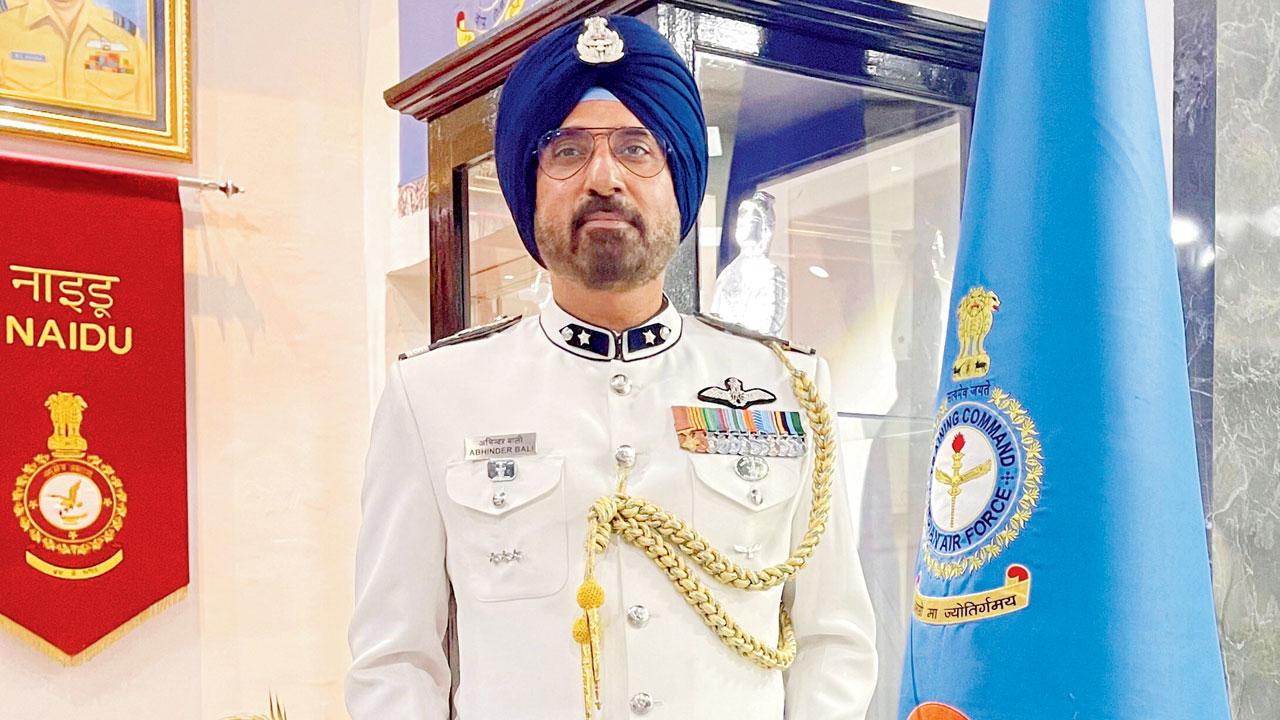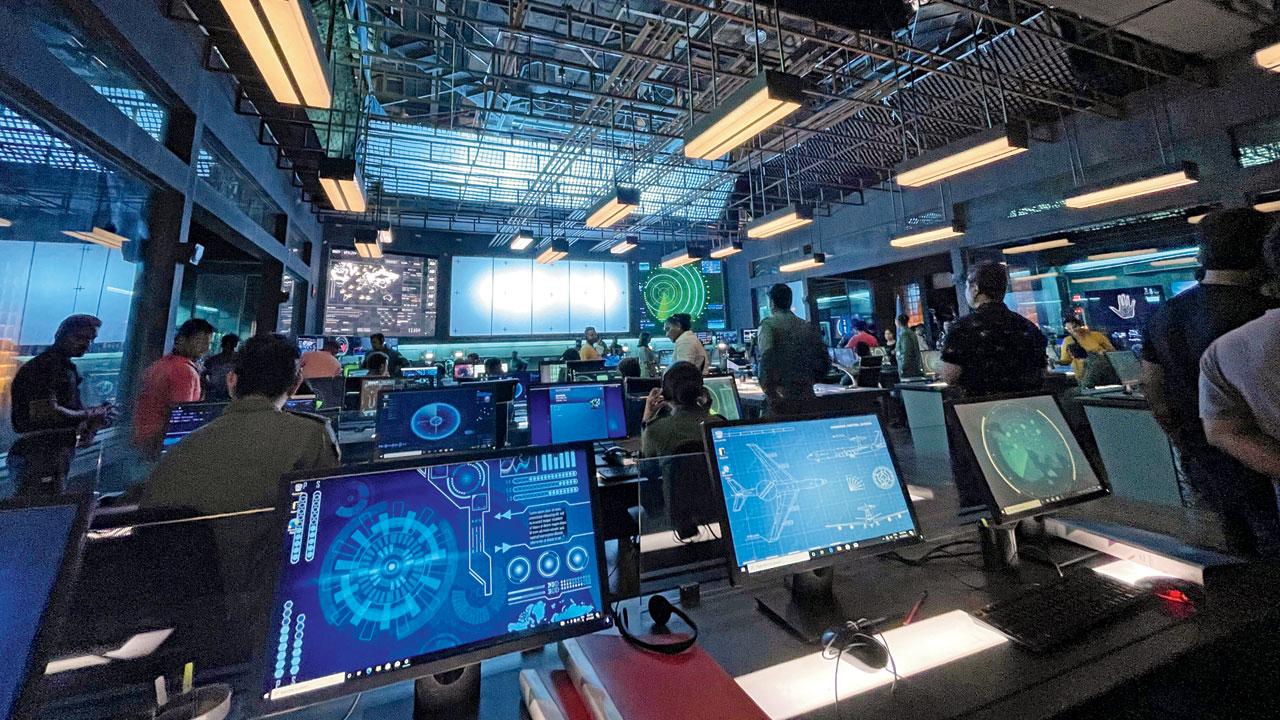Fighter was so authentic that its screening got a standing ovation from the real heroes. Its co-producer, second unit director and writer, a former fauji, made it happen

Fighter scriptwriter Ramon Chibb co-wrote the story, served as Second Unit Director and played Air Commodore Abhinder Bali, the Chief Instructor at the Dundigal Air Force Academy
What the audience may not see, but any personnel from the Indian Air Force would is how the left shoulder of the uniform is the fun shoulder: “You can wear any badge you like there, with the permission of your Commanding Officer,” Ramon Chibb tells us over a video call from Goa where he is holidaying. “The right shoulder is for patches of the crafts you fly and the India patch.” Minni [Squadron Leader Minal Rathore played by Deepika Padukone] wears a fun ‘Don’t Bug Me’ one as opposed to Patty’s [Hrithik Roshan as Squadron Leader Shamsher Pathania] and Bash’s [Basheer Khan, Akshay Oberoi] ‘Fighter Forever’. The lay audience may not register these details of authenticity, “but the Air Force did,” says Chibb gleefully, and you can tell that validation is enough. The screening of the movie for the armed forces ended with a standing applause.
ADVERTISEMENT

Chibb co-produced the movie, wrote the screenplay and served as second unit director for Fighter. He also makes an appearance as Air Commodore Abhinder Bali, Chief Instructor at the Dundigal Air Force Academy in Hyderabad where Patty is transferred. Chibb served in the Infantry for five years, after being unable to follow his father into the IAF due to compromised eyesight. But he was, incidentally, at the commando training facility in Belgaum around the time Nana Patekar was preparing for his role in 1991 film Prahaar: The Final Attack. That movie, and 1982’s Vijeta are the two movies he credits with diving deep into research and firm marriage to authenticity. “It’s what Hollywood gets right,” he says, “When I see Gregory Peck in The Guns of Navarone, I can see that they got the weapons he used right.”
Chibb, who later became a pilot and has a home next to the flight school in Hadapsar, Pune, wrote the story in 2015 and took it to director Siddharth Anand in 2016. “He said it wasn’t mass-y enough, ‘but let’s work on it together to make it into a film that could be understood by the audience’. Siddharth is a true cinema guy, he has a large vision.” Pulwama and Balakot were added later, as was Minni, because women were allowed to serve as fighter pilots only in 2015. Chibb drew up a career sheet for each character: The posts they held, the medals they would have won, the crafts they would have flown and the wars they would have fought in to become the best air fighters in the country to be included into the Air Dragon team. It couldn’t be just because they were box office superstars.

So, Minni would be an all-weather pilot, a member of Sarang Aerobatic Display team, and be decorated with the Vayu Sena medal for an act of courage to be included into Group Captain Rakesh Jaisingh’s (Anil Kapoor’s Rocky) dream team. She would have been commissioned in 2010, have 1,500 hours of flying under her belt and served in Bikaner, Leh, Siachen, Ambala, and Hakimpet. Similarly, “Fighters are split into two categories,” explains Chibb, fuelled evidently by enthusiasm, “into those who fly Russian and non-Russian aircrafts since we have a huge inventory of the former. Patty would have flown the Kiran, Pilatus PC 7, Mig 21 and 29, before coming to the Sukhoi 30—the first with a two-crew cockpit. “It’s telling of his personality as a lone ranger and only child,” say Chibb, and it is also integral to the plot to have both protagonists—Roshan and Kapoor—in the climax.
“We had the blessing of the IAF from the beginning and shot at Tezpur, Dundidal and Pune air bases. Kudos to Siddharth that he let me run away with the details. ‘This is your world,’ he said, ‘Keep it real’. So even the walls of the houses are typically fauji—decorated with every photograph of the characters’ journey from being cadets to officers, with medals, emblems, swords of honour” of which we catch a glimpse in Bash and Patty’s homes.

The IAF control room built to be closely authentic
Then there was the internalisation of fauji codes: That there is a hierarchy that you obey without questioning; and manner of speech. Patty obeys his father’s orders to get tea for his friends more easily than he does his superiors. He asks for permission to speak from his superiors. “Hrithik bought into these nuances impeccably. He wanted to know all these things; he’ll make a great filmmaker,” says Chibb. They also drop in easily into a peer’s place, as they do at Patty’s Jammu home, when a training gets cancelled. There are impromptu picnics and gatherings. “This is what I saw when growing up. People would land up at any time and say, ‘Ma’am khana khila do’. There is always the fear that one of them might not come back; so they party harder. We wanted to build all this into the film, and not just go, thak-thak-thak from one action scene to another.”
So, if you pay close attention to when we first hear Group Captain Jaisingh speak to his team, it’s in staccato. “That’s how officers brief. Anil sir would say to me, ‘Tu bol ke dikha’ and then repeat the dialogue, ‘Ab main bolta hoon’. He shadowed the Squadron Leader at Tezpur to get the mannerisms right,” he says. Squadron Leader Rathore’s character was based on all the women at flight school who were better than Chibb and “never let us hear the end of it. I always thought they made good pilots. They were more focussed, learned faster and of course, were not bogged down by us clowns.”
Chibb may not have realised his childhood dream, but it’s evident when we speak to him that he has been happy to do the next best thing: “I flew in those planes, shot them, and even rigged the camera on to them for some shots.”
 Subscribe today by clicking the link and stay updated with the latest news!" Click here!
Subscribe today by clicking the link and stay updated with the latest news!" Click here!












